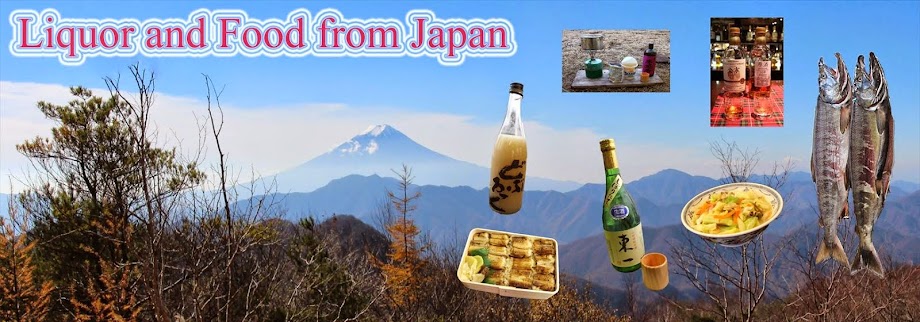Many Japanese drink a lot of liquor including Sake in particular for the year-end and New Year holidays. We have a year-end party at the end of the year and drink the liquor then, and we drink the liquor with our family from morning for New Year holidays and we gather with a friend afterwards and open the new annual convention and drink it again on this occasion.
It is the time when many Sake are so delicious. However, let's enjoy the liquor not to damage liver with controlling ourselves.
Sake which I introduce is "Cho-Ouroku, Muroka, Jikagumi" first this year. I think to introduce the Sake of West Japan a little apart from them this time because here introduced only a Sake of the Kanto district around Tokyo for a while.
 |
| "Cho-Ouroku, Muroka, Jikagumi". The label is simple and stylish. |
This liquor is a Sake of Jikagumi performed direct bottling of by a tank. Thus, a feeling was so fizzy for me.
By the way, "Cho, 超" which a head of this Cho-Ouroku has is a meaning called Super. Probably it is thought to emphasize the difference with conventional products.
Outline
Ouroku-Brewery making Ouroku is in Matsue of Shimane.Speaking of Shimane, it is famous for a tourist as a place with many well-known Shinto shrines including Izumo Taisha Shrine. There is the place where it is hard to access a little because it is far from each metropolis. However, it is the place where the atmosphere of the traditional country of Japan is felt because a lot of attractive sightseeing spots are not developed that much.
 |
| This is Izumo Taisha Shrine. It's a most popular sightseeing spot in Shimane. |
Shimane is the prefecture with the most little population in the districts of Japan. However, there is no difference with other prefectures in relation to the difference of the number of breweries, because there are many big Shinto shrines.
 |
| This is Kamos Shirine in Matsue, Shimane. It's a not popular for travelers, but the building is older than above-mentioned Izumo Taisha Shrine, and it is appointed to a national treasure. |
 |
| This is Iya-station. It is necessary for you to change to local train somewhere because expresses don't stop there. |
 |
| The left building is Ouroku-brewery. |
Character
Name: "Cho-Ouroku, Jikagumi" (超王禄、直汲み)Place: Ouroku-Brewery (王禄酒造), Matsue, Shimane
Class: Junmai
Rice: Gohyakumangoku
Rice polishing rate: 60%
Yeast: Unknown
Filtration: No
Heat treatment: No
Water addition: No
Other characteristics: Jikagumi
Alcohol content: 17.5%
Sake meter: +7.6
Acid meter: 2.8
Price: JPY 3,780 (1,800ml)
Official website: http://www.ouroku.com/
My rating: BB
 |
| Sake-mater is slightly high, and it is a sharpness Sake. |
Taste
The fragrance was not so strong.It is naturally so fizzy because it was Sake of Jikagumi. It at the time of the opening was strong like soda.
The taste was sharpness generally. The strong Umami appeared there, but it was considerably square-built.
There is little sweetness there and is a typical thick-sharpness Sake.
Finally refreshment to appear in the finish was the most impressive because sharpness and acidity strongly tightened the whole. It is a thick Sake of the taste, but is the taste of the property that it is hard to be got tired of. It will have good affinity with the dish.
 |
| I drank with oily Chinese food. They were very good affinity. |
How to buy (or drink)
Oroku is stocked only by a special contract shop of 24 stores of the whole Japan. When it is the nearest place, there is Ginza-Kimijimaya (googlemaps) from Tokyo.There is not a little the bar which it is stocked because a Oroku is relatively famous Sake.
When you want to drink them in the bar, please search it with the word "王禄 日本酒" in the following sites.
http://tabelog.com/

























